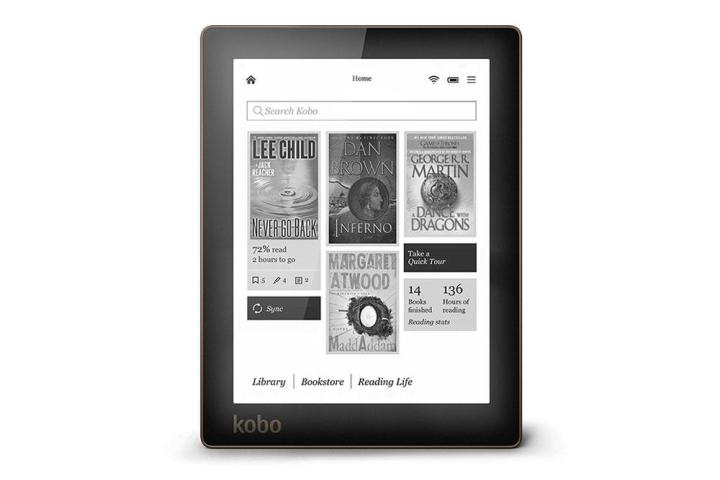
The new e-reader and tablets Kobo announced this week all look like fine devices worthy of your attention, but they’re not breaking any new ground. The real game-changer is actually Kobo’s partnership with Pocket (formerly Read It Later), now allowing Aura owners to seamlessly save Web content for consumption on their e-readers. By bringing Pocket’s service to the Aura, Kobo just made its e-reader way more relevant. And since other e-reader makers have a history of copying what Kobo does, it gives me hope that we’ll see more deals like this across all platforms.
Partnering with Pocket proves that Kobo understands what readers want, and is willing to give it to them. Every e-book company wants customers to stick with its platforms, stores and devices, but few are willing to do what it takes to make those devices the center of a person’s entire reading experience (if it doesn’t involve getting more of your money, anyway). Some say that’s what tablets are for – and until this week that was true.
I, like millions of others, use Pocket every day. I read long-form articles and short fiction from the Web on my commute, and during my down time. I love my e-reader and wish that I could use it for this purpose. Until now that wasn’t possible. Now I’m actually considering the Kobo Aura just so that I can keep all my reading material in one place. I doubt that I’m the only one.
Pocket is one of the most popular services for saving Web content for later reading and viewing. Unlike other popular apps with similar functionality, Pocket works smoothly across different platforms and browsers, and syncs reliably once you add something new. It strips away everything but the core text and an image, so that you can concentrate on reading. According to Kobo, Pocket users read the equivalent of three books’ worth of content from the Web each month. Up until now, they’ve had to do so on tablet, smartphone, and computer screens.
Now any text articles saved to a Pocket account will sync to the new Kobo Aura e-reader in the Articles section of the Library. Just as with the iOS and Android apps, any time the Aura is online it will pull down new content so the articles are there whenever you’re ready to read. And if you delete or archive a post, it goes away. It’s the same experience, just with a better-for-your-eyes screen.
Before Pocket got big, Instapaper was among the top services for saving posts and articles from the Web. People flocked to it because the service gave users the ability to send what they saved to the Kindle automatically via WhisperSync. Instapaper also generated an EPUB version for Nooks, Sony Readers, and other such e-readers, but there was no way to send it automatically or over the air. The Kindle thing wasn’t official, it just took advantage of the send via email function, and was so popular that over 600,000 people used it even after the iPhone and iPad apps came out.
Despite Instapaper’s popularity and even Amazon’s Send To Kindle extension for Chrome, the idea of giving customers an easy way to save and sync Web articles to e-reading devices seems to have not occurred to major players like B&N and Sony. And Amazon’s efforts are half-baked at best. This is maddening for many reasons, the main one being: this should not be hard. The Nook Simple Touch (both versions) run on Android. Pocket has an Android app. Would it be so hard to modify that app for the Nook? Clearly not, since the company did it for Kobo. One could ask the same of Sony and Amazon.
Digital reading isn’t just about e-books, anymore. It never really was. The success of Instapaper, Pocket, and other similar services proves that what readers care about is content. They’re not so picky about where the content comes from, but they do care deeply about how they consume it. Smart e-reader makers would do well to take note of this and to realize that making a tablet just isn’t enough. After all, tablets didn’t kill e-readers, despite all the predictions that they would. Any voracious reader could have told you why: E-Ink screens still offer a superior experience. And now Pocket is part of that experience.
So, how long do you think will it be before B&N, Amazon, and Sony start cuddling up to the competition?
Editors' Recommendations
- Your guide to the best e-book readers for 2022
- Amazon offers the best deals on Kindle e-book readers ahead of Black Friday

